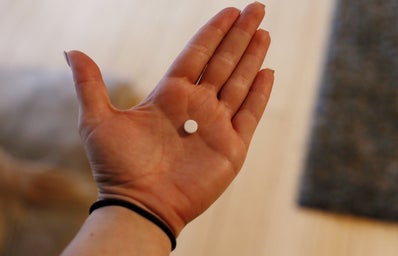For what seems like forever, the responsibility of taking and managing birth control has rested and still continues to rest on women. But now, there’s potential for this to finally change. Thanks to 21st century technology, there’s been a dramatic increase in funding and research. Scientists are now testing new methods of contraception which are specifically designed for men. Another step further towards equality.
Whilst there are now multiple options for female birth control, the current methods are unfortunately harmful, unnecessarily painful and ultimately archaic.
The only real options that men have had for years are:
- Condoms: a barrier form of contraception that prevents sperm from reaching and fertilising an egg. Condoms are not 100% reliable as there is risk of the condom splitting and therefore leaking sperm, meaning there’s a risk of becoming pregnant.
- Vasectomy: a minor and typically permanent procedure that stops the sperm from reaching the semen ejaculated from the penis.
‘The Withdrawal Method’, typically known as ‘the pull-out method’, is not a method of contraception and is frankly ineffective. This is because sperm can be released before ejaculation and therefore can cause pregnancy. However, with the latest research, things could be about to change.
Let’s have a look at the new research:
Shoulder Gel
This shoulder gel, called Nestorone, contains both testosterone and progestin. This gel naturally works by blocking natural testosterone production in the testes.
Consequently, this reduces sperm production to low levels, meaning an overall lower chance of getting pregnant. This option is available as a gel because Nestorone doesn’t get absorbed by the body when it’s taken orally. In theory, it’s stated that men could forget to use the gel for a day with no consequences. However, if they forget to use the gel for three to five days then this won’t work as a viable method.
the male pill
Similar to ‘the pill’ that women take, the male pill works by taking it once daily. The male pill contains dimethandrolone undecanoate (DMAU), meaning that the pill suppresses two hormones that are needed to create viable sperm. These two types of male hormones are follicle-stimulating hormone (FSH) and luteinizing hormone (LH), meaning that it simultaneously decreases the production of testosterone and sperm without causing symptoms of low-testosterone.
Significantly the side effects of the male pill are considerably less to ‘the pill’ for women. Side effects for men only include possible acne, headaches, tiredness and reduced sex drive.
This option can be additionally administered through injections too!
Vasectomy
Yes, vasectomies are already a thing. However, this one is different – it’s reversible! This procedure would involve implanting a gel into the penis duct, forcing the sperm to halt from travelling. The gel will naturally dissolve over time – hence the reversibility characteristic.
Conclusion
These options offer more flexibility for men while also importantly reinforcing two significant facts. Firstly, that men and women are both responsible for contraception, something that typically is forgotten. Secondly, that men could take a more active part and role in their reproductive health.
Unfortunately, there’s still a way to go before these options are made available. The long-term effects on the male body still needs to be assessed before it’s available as an option publicly. However, these options prove it’s a step in the right direction for equality in birth control.

